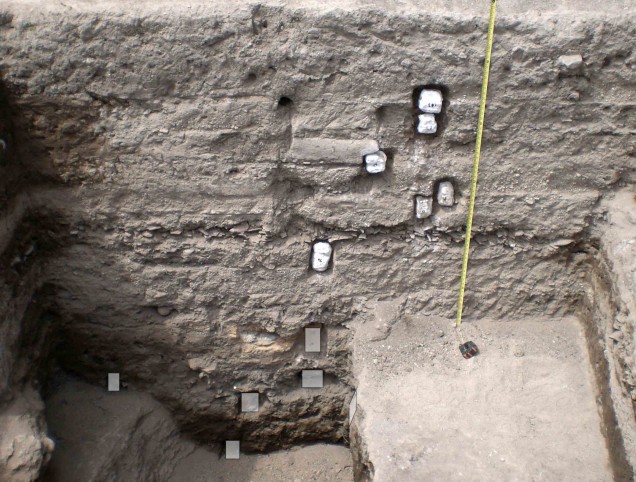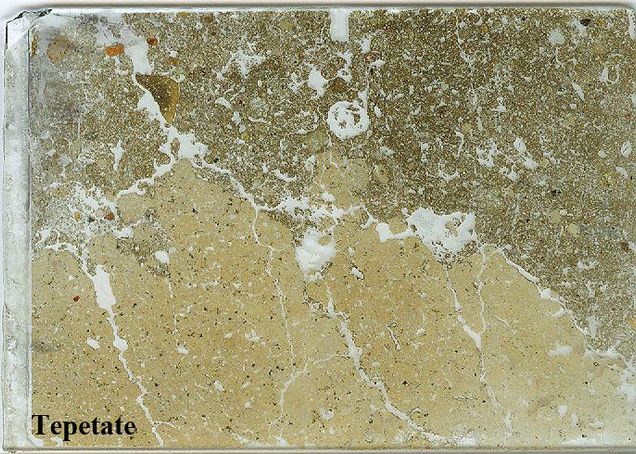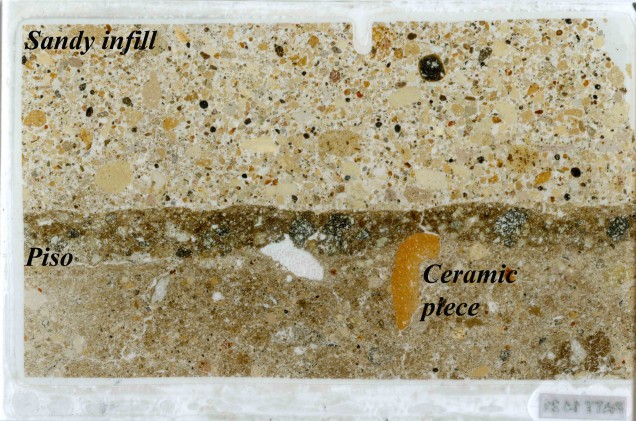Micromorphological Analysis

South-Profile in Compound 18:S3E1 with sampling of oriented blocks for micromorphological analysis. Note the diverse constructed floors (pisos), construction materials, infill materials and fire features.
(This research is conducted by Mareike C. Stahlschmidt at the Institute for Archaeological Sciences, University of Tübingen)
Micromorphological analyses in the PATT project are directed at understanding the formation of the archaeological deposits and the human behavior responsible for them. Archaeological deposits present their own artifact class and hold a wealth of information on human behavior, which can be extracted by geoarchaeological techniques such as micromorphology and Fourier Transform Infrared spectroscopy (FTIR). Micromorphology coupled with FTIR allows not only the identification of sedimentary components, but also the identification of sedimentary structures, pedogenetic features, and their spatial and temporal relationships allowing us to reconstruct formation processes of the Compounds, deposits and features.
In preparation of the laboratory analyses, geoarchaeological field work was conducted in the 2013 and 2014 field seasons, in which all profiles in the operation areas were studied and appropriate samples were taken. Macroscopic field analyses revealed a wide range deposits at the two household compounds and the Street of the Dead with various infill materials, diverse constructed floors, bricks, hearths and ash dumps well as clay-rich natural deposits next to the tepetate, the volcanic bedrock in this area.
 Scan of thin section PATT 13 11 with tepetate for micromorphological analyses. The contact between the tepetate and the overlying brown deposit is sharp and sloping.
Scan of thin section PATT 13 11 with tepetate for micromorphological analyses. The contact between the tepetate and the overlying brown deposit is sharp and sloping.
More specifically, the micromorphological and FITR analyses are aimed at answering the following questions: What microscopic traces of activities, construction materials, and technology are preserved within the sediments? Is occupational specialization visible in the sediments, e.g. in situ obsidian working? What kind of fire use is represented and is there a spatial or diachronic change in fire use? What differences can be observed in the archaeological deposits of the residential compounds 17:S3E1 and 18:S3E1? Was the southern extension of the Street of the Dead cut into the tepetate? What is the infill history of the Street of the Dead? Micromorphology and FTIR spectroscopy coupled with the field analyses will answer these questions and provide new insights into life at the Tlajinga district.


